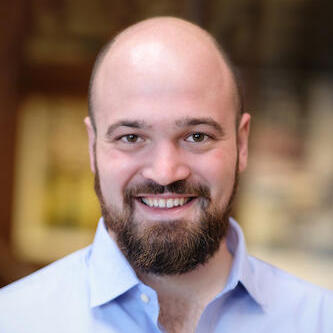Technical Programme
Technical Papers
- The papers can be found on the ACM Digital Library
Video Presentations
Programme
The ENSsys 2020 technical programme is shown below:
Start Time: 1600 UTC / 1000 CT / 0800 PST / 1600 UK / Japan +1 0100
If you have registered on the SenSys website, but are having difficulty getting hold of the ENSsys Zoom link, enter your details here and we will email you a link.
| 16:00 UTC | Opening Remarks |
| 16:05 UTC | Keynote: Towards a Taxonomy of Energy Scavenging Applications, Architectures, and Execution Models Pat Pannuto (University of California, San Diego) |
| 16:35 UTC | Coffee Break |
| 16:45 UTC | Session 1: New Directions (Session Chair: Bashima Islam) |
| Intermittence Anomalies not Considered Harmful [Pitch|Presentation] A. Maioli, L. Mottola | |
| On Securing Persistent State in Intermittent Computing [Pitch|Presentation] H. Asad, E. Wouters, N. Bhatti, L. Mottola, T. Voigt | |
| Energy Harvesting Systems Need an Operating System Too [Pitch|Presentation] S. Venkat, M. Clyburn, B. Campbell | |
| Reliable Energy Sources as a Foundation for Reliable Intermittent Systems [Pitch|Presentation] D. Jagtap, P. Pannuto | |
| 17:15 UTC | Coffee Break |
| 17:25 UTC | Session 2: New Platforms (Session Chair: Sivert Sliper) |
| A Battery-Free Long-Range Wireless Smart Camera for Face Recognition [Pitch|Presentation] M. Giordano, P. Mayer, M. Magno | |
| Defragmenting Energy Storage in Batteryless Sensing Devices [Pitch|Presentation] E. Yildiz, K. Yildirim | |
| Zero Power Energy-Aware Communication for Transiently-Powered Sensing Systems [Pitch|Presentation] A. Torrisi, D. Brunelli, K. Yildirim | |
| 17:50 UTC | Extended Coffee Break and Posters |
| Comparing NVM Technologies through the lens of Intermittent Computation [Pitch] T. Daulby, A. Savanth, A. Weddell, G. Merrett | |
| Towards Battery-Free Body Sensor Networks [Pitch] S. Sen, S. Lee, R. Jackson, R. Wang, N. Alshurafa, J. Hester, J. Gummeson | |
| Adaptive Energy Budgeting for Atomic Operations in Intermittently-Powered Systems [Pitch] J. Zhan, A. Weddell, G. Merrett | |
| Can Crystal Oscillators Keep Time Without Power? [Pitch] A. Alsubhi, N. Tobias, S. Babatunde, J. Sorber | |
| 18:20 UTC | Session 3: Tools, Simulation and Modeling (Session Chair: Vito Kortbeek) |
| eProfiler: High-Precision Power Monitoring System for IoT Devices Featuring Extreme Dynamic Range of Operation [Pitch|Presentation] G. Kazdaridis, I. Zografopoulos, N. Sidiropoulos, P. Symeonidis, T. Korakis | |
| Energy-aware HW/SW Co-modeling of Batteryless Wireless Sensor Nodes [Pitch|Presentation] S. Wong, S. Sliper, W. Wang, A. Weddell, S. Gauthier, G. Merrett | |
| Analysing and Improving Robustness of Predictive Energy Harvesting Systems [Pitch|Presentation] N. Stricker, L. Thiele | |
| Estimating Harvestable Energy in Time-Varying Indoor Light Conditions [Pitch|Presentation] X. Ma, S. Bader, B. Oelmann | |
| 18:50 UTC | Closing Remarks and Presentation of Awards
|
| 19:00 UTC | ENSsys Business Meeting |
Keynote Speaker
 Title: Towards a Taxonomy of Energy Scavenging Applications, Architectures, and Execution Models
Title: Towards a Taxonomy of Energy Scavenging Applications, Architectures, and Execution ModelsSpeaker: Pat Pannuto (University of California, San Diego)
Abstract: Once a radical idea, today, a wide array of systems find interesting ways to scavenge energy from their environment to wholly support or sometimes simply supplant their operation. There is often a mis-match between instantaneous available energy income and desired energy usage patterns, however, which has resulted in an array of research into various mechanisms for time-shifting energy accumulation (largely hardware approaches) or energy use (largely software approaches). We now have an opportunity to survey and collect the breadth of techniques that have been explored and to begin the process of laying out a more principled design pipeline for energy scavenging systems and application. If we can craft this understanding of design, might we as a community then be able to take an application domain historically dominated by highly optimized, application-specific vertical integration and create a set of modular and composable design blocks and in turn help usher in a new era of energy scavenging systems?
Biography: Pat Pannuto is an Assistant Professor at the University of California, San Diego. Pat's research is in the broad area of networked embedded systems, with contributions to computer architecture, wireless communications, mobile computing, operating systems, and development engineering. Pat's work has been recognized as a Top Pick in Computer Architecture and selected as a Best Paper Finalist at IPSN, and has been awarded NSF, NDSEG, and Qualcomm Innovation fellowships. Pat has also received teaching awards from the Computer Science Department, the College of Engineering, and the Rackham Graduate School at the University of Michigan.